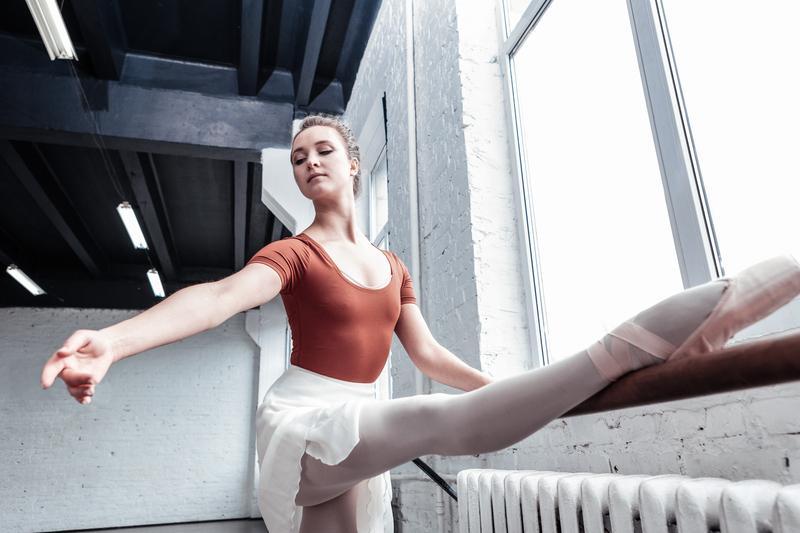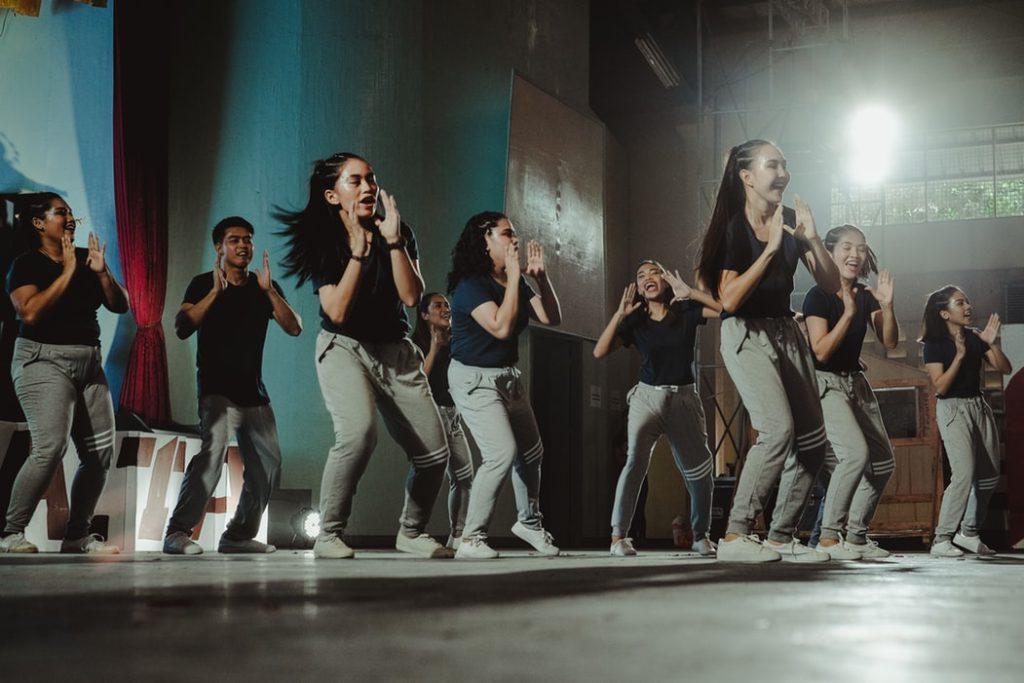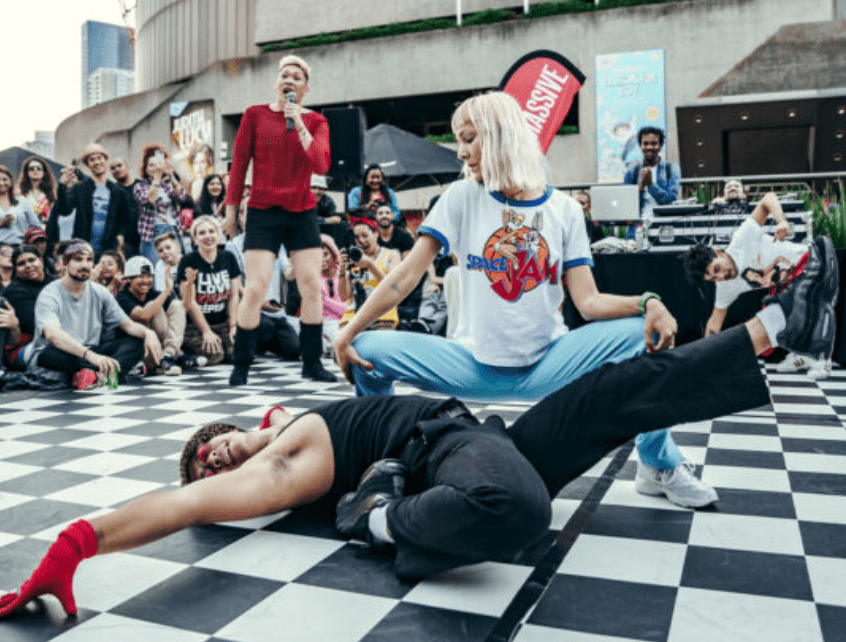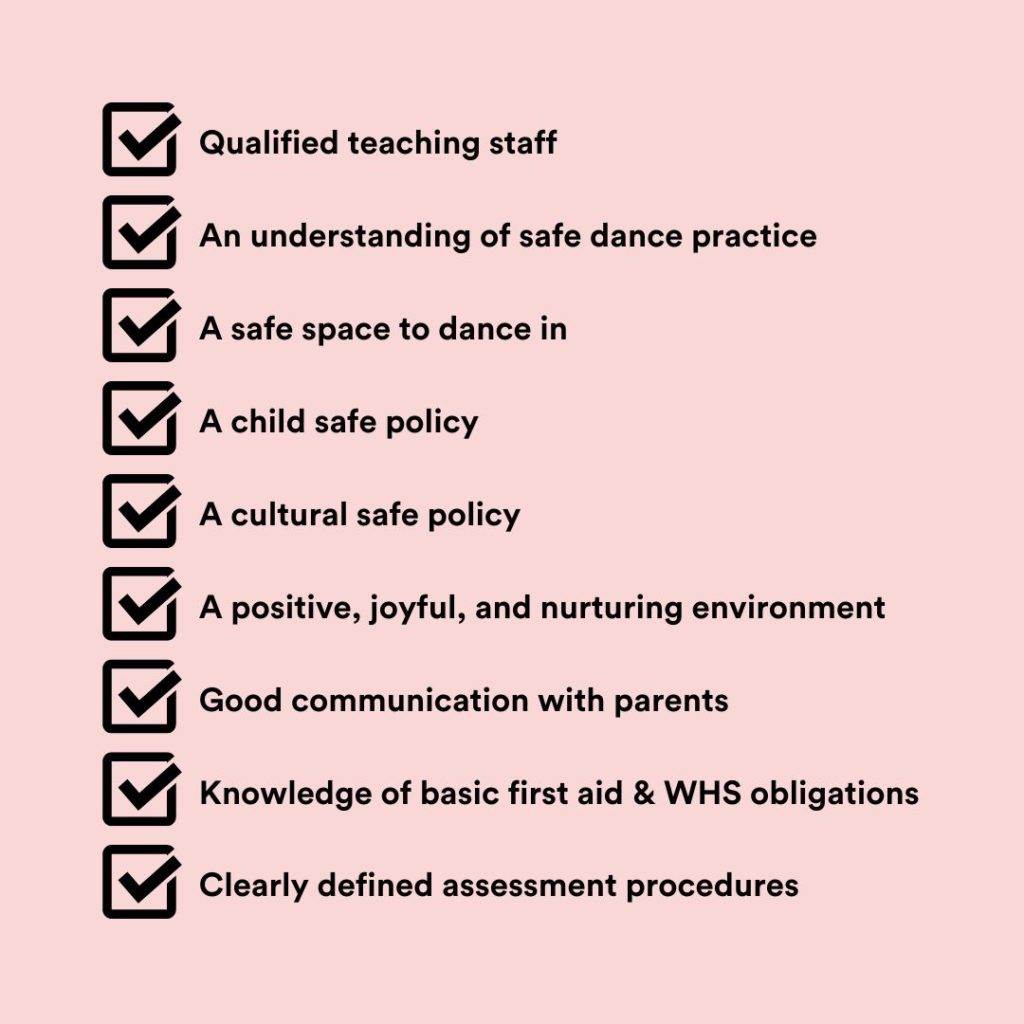Dance is a popular activity for Australian children that has many positive impacts on their physical and mental health. There are hundreds of studios and classes to choose from; some focus on a particular dance style, others offer a variety. Some are considered recreational or social activities, while others promote competitive dance or prepare for careers.
So how do you pick the “right school” for your child?
We’ve prepared this handy guide to help you find a school that will be a positive and joyful experience for your child in a safe, welcoming environment.



Why are you looking for dance classes?
Understanding both your own and your child’s motivation for taking dance classes is an important step. Is it about enjoyment, fitness or creativity? Maybe your child wants to learn a particular syllabus or participate in competitions and performances? Understanding this will help you find a school that is focussed on an area that aligns with your needs and expectations.
While dance is an excellent form of physical exercise, it should also be fun and not feel like a chore. Choosing the appropriate dance style and focus, in discussion with your child, is a key factor in whether they will want to keep going after any initial excitement and ‘newness’ wears off.
Does the school offer what you’re looking for?
Young students will benefit greatly from experiencing a variety of dance styles and teachers, and opportunities to perform in different environments. So, ideally they will not be locked into one particular style. If your child is highly motivated after several years of varied dance experience (perhaps around the ages of 8–10), you can encourage them to specialise in the particular style/s that they love while continuing to develop a sound technique that will underpin all of their dancing. A child who dreams of being a ballet star or the lead in musical theatre will thrive in a setting where these disciplines are the focus.
Examinations, performances and competitions
Ask about assessments at the school. Is the curriculum geared towards a formal qualification or progression in the discipline? Some studios place great importance on examinations or participation in high-pressure competitions and performance programs (these may also cost lots of additional dollars!).
Performing can be a valuable and joyful learning experience, and exams or competitions can be stimulating and motivating, but they can also raise unrealistic expectations. Consider how your child might respond to these pressures? Be aware of extremely competitive environments as these run the risk of comparing students rather than celebrating individuality, unique skills, different body types, creativity, musicality, etc.
Once you understand your motivations and have settled on a style of dance, you can move on to consider the more practical aspects of selecting the right school or studio.
Is it a safe environment?
Safety in a dance studio or classroom is a complex issue when you consider the physical and emotional needs of your child. In Victoria, as in most jurisdictions today, there are specific regulations around adults working with children to keep them safe from sexual, physical, and emotional abuse. Additionally, there are standards around Safe Dance® procedures—such as type of dance floor, warm up and cool down rules, and even first aid—that can influence safe dance practice.
We recommend you consider the following areas when deciding if the environment is safe for your child:
Do they follow Safe Dance® procedures?
Safe Dance ® guidelines include how to set up a safe learning environment, what makes a practice or performance venue safe, the importance of catering to physically different bodies and abilities, how movements might impact on the body, and simple injury prevention and management strategies.
Ask the school if they understand and follow safe dance procedures. You might also ask if they have a sprung, non-slip floor—similar to a basketball court—which is safe for repetitive, physical activity. Visiting the studio and looking at the facilities will help you determine if equipment is in good condition.
Any good dance school should also be able to give you advice about what clothing to wear, requirements for costumes, uniforms and—importantly—shoes.
Do they have a Child Safe Policy?
All children have the right to feel safe and be safe, but safety does not just happen. The Commission for Children and Young People (CCYP) expects all organisations that provide services for children to implement the 11 Child Safe Standards to protect them from abuse.
You should confirm they:
- Have a policy that addresses each of the 11 Child Safe Standards
- Have placed a Policy Statement or Commitment to Child Safe Statement somewhere visible (for example on the wall of their studio’s entrance) to alert students, visitors, and parents of the policies and how to can gain access to them
Do they have a Cultural Safe Policy?
A culturally safe environment is one in which the diverse and unique identities and experiences of Aboriginal children and young people are respected and valued. Cultural safety is about shared respect, shared meaning and shared knowledge. It not only embraces diversity and inclusivity, but also learning as an ongoing journey.
You can ask if the school has a cultural safe policy. Or you might like to watch a class in action to see if it is the right environment for your family.



Is there a qualified teacher leading the class?
While there is no standard accreditation for dance teachers across Australia, the Ausdance network recommends that dance classes should always be led by a qualified teacher.
At a minimum you should check if the teacher has completed some form of recognised training, such as the Assistant Dance Teaching Skillset (CUASS00111). Be wary of studios that rely on their senior students to teach classes—good dancers/students are not necessarily good dance teachers.
Qualified dance teachers should be leading safe, fun, inclusive and informative classes where technique and choreography are taught in an engaging manner.
What To Look For
This checklist is a good summary of what to look for when choosing a dance school or studio:

While there are many options, and considerations when choosing a dance class for your child, by asking these questions along the way, you can feel confident you’re making an informed choice.
And remember, if your child enjoys his or her lessons, looks forward to the next one, smiles and is happy in class, is rarely injured and seems to be learning or consolidating new skills regularly, the chances are that the school is meeting your child’s need for now.
